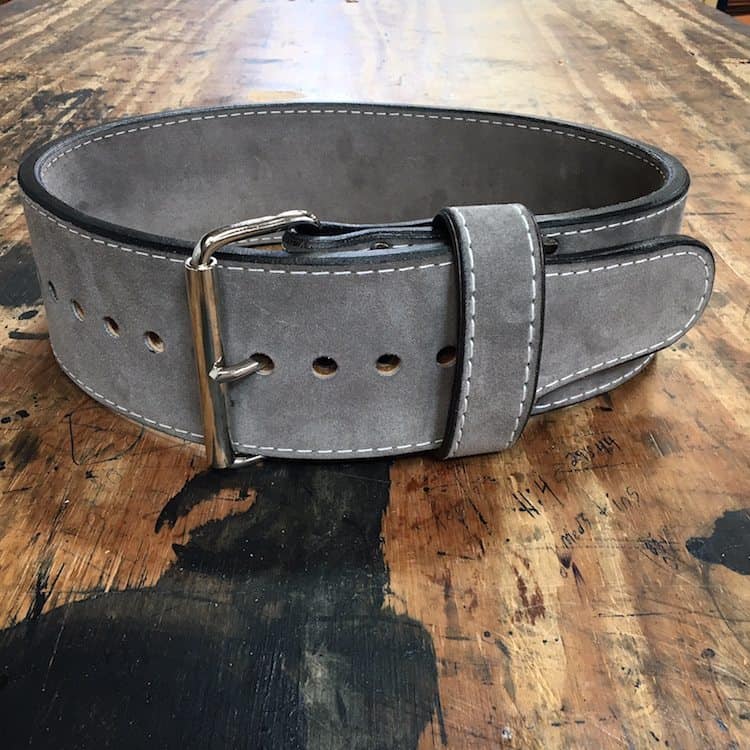How Weightlifting Belts Work And What Weightlifting Belt to Choose
 A weightlifting belt commonly supports your abs, not (at once) your again. It sounds backwards, however right here's why: the belt acts like a 2nd set of abs to prepare your complete frame to lift heavy masses.
A weightlifting belt commonly supports your abs, not (at once) your again. It sounds backwards, however right here's why: the belt acts like a 2nd set of abs to prepare your complete frame to lift heavy masses.To brace your self for those incredible heavy lifts you'd take a deep belly breath and preserve it, a way of "breathing" referred to as the Valsalva maneuver. The Valsalva maneuver helps create intra-belly strain that cushions and helps your backbone. And that is wherein a weightlifting belt bestows its powers. With a lifting belt, you do your deep belly breath into the belt, which pushes again in opposition to your abs. This enlarge the outcomes of that intra-stomach pressure, and in turn, facilitates defend your lower back and lets it cope with the stress of heavier hundreds even better. Weightlifting straps are a sure way to repair your bar in place and prevent sliding.
Sporting a belt by itself may not routinely stage up your energy and lifting capacity. There may be a studying curve to wearing it and lifting with it on (much like there may be a gaining knowledge of curve to having the ability to correctly apply intra-abdominal stress and raise). Sure, a few can achieve the blessings right away, but it's going to take most a while earlier than matters will click.
While you throw on a belt and use it properly, the skies part, birds sing, and your deadlifts or squats (or both) get a sizeable boost. Greg Nuckols of Strengtheory.Com determined that well-educated belt customers can typically circulate 5-15% more weight for the equal units and reps, be able to squeeze in an additional couple reps on the identical weight, or raise the equal weight for the equal wide variety of reps with less effort. It truly is pretty widespread!
We are able to take this to signify that over the years schooling with a belt will likely get you more potent than education without a belt. This makes sense inside the context of being able to do more overall "paintings" (i.E. Lifting more weight and banging out greater reps) and constantly push your body to improve, a technique referred to as innovative overload. Within the lengthy-time period, you could gain greater muscle length and strength.
A weightlifting belt can be used for squats, jerks and deadlifts. Skilled lifters throw the belt on for close to-most efforts, and take it off for normal training and heat-ups. Generally, "close to-most" is a weight that is eighty% or extra of your maximum carry. The exact percentage is often arbitrary, so put on it while you think you really want the more help on big lifts.
How to put on a weightlifting belt?
1) Take a breath (hold it)
2) area the belt in position and brace the abdominal wall
3) Draw the belt just tight enough to barely restriction your braced belly function to gain most benefit
Weightlifting belts are going to be uncomfortable for some time, especially as you are getting to know to get used to 1. But, after you get cozy with your belt, you may begin to experiment with changing the belt's role on your torso. As an example, Omar Isuf, a strength and overall performance train, says that skilled belt-users have a tendency to wear their belts higher on their torso all through a deadlift than they do at some point of a squat. More specially, in a deadlift you might locate carrying it around the mid belly to be extra comfortable. At some stage in a squat, you might like it above the iliac crest.
You furthermore may need your belt to be tight sufficient to stay in the identical place whilst you lift, however now not so tight which you're cutting off complete, deep breaths or circulation. The garments you put on or even down to how lots water you're protecting could affect how tightly you have to drag your belt. If you're simply mastering, it's k to put on it a tad looser till you discover ways to love its not-so-tender embrace. Sooner or later, keep in mind that your new belt needs to be broken inside the equal manner a shoe does.
Glad Lifting!

Comments
Post a Comment